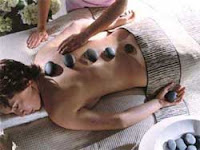J Electromyogr Kinesiol. 2009 May 10; Marshall PW, Mannion J, Murphy BAOBJECTIVE: The objective of this study was to measure hamstring muscle eccentric and concentric strength in individuals with and without low back pain (LBP). Two composite scores for the relative balance of eccentric to concentric strength at the different movement velocities were calculated (the DEC and SEC), to determine whether or not self perceived pain, disability, or fear avoidance measures were associated with hamstring strength characteristics. DESIGN: Cross-sectional repeated measures design. SETTING: University laboratory. PARTICIPANTS: Fifteen individuals with chronic LBP and 15 matched controls. MAIN OUTCOME MEASURES: Isokinetic eccentric and concentric strength at 30 degrees s(-1) and 120 degrees s(-1)(.) Composite scores (DEC and SEC) based on peak torque were calculated to evaluate the relationship between the different muscle actions across the test velocities. Self report measures included the Oswestry disability index, general health and well being, fear avoidance, and pain. RESULTS: Eccentric/concentric strength ratio at 30 degrees s(-1) was higher for the LBP group (F(1,58)=4.81, p=0.032). The SEC was also higher for the LBP (F(1,58)=5.97, p=0.018). Fear avoidance beliefs and mental well-being were significantly associated with the SEC only in the LBP group (adjusted r(2)=0.26, (F(2,27)=5.8, p=.008). For the control group both the DEC and SEC were associated with self report measures. Matched differences between groups' for the SEC were best explained by fear avoidance beliefs about work (adjusted r(2)=0.12, F(1,28)=5.1, p=0.03). CONCLUSION: Reduced concentric relative to eccentric strength is best identified by the SEC. The SEC was significantly associated with impaired self report measures of fear avoidance and mental well being in individuals with LBP. Differences between groups for the SEC were best explained by fear avoidance beliefs about work.



